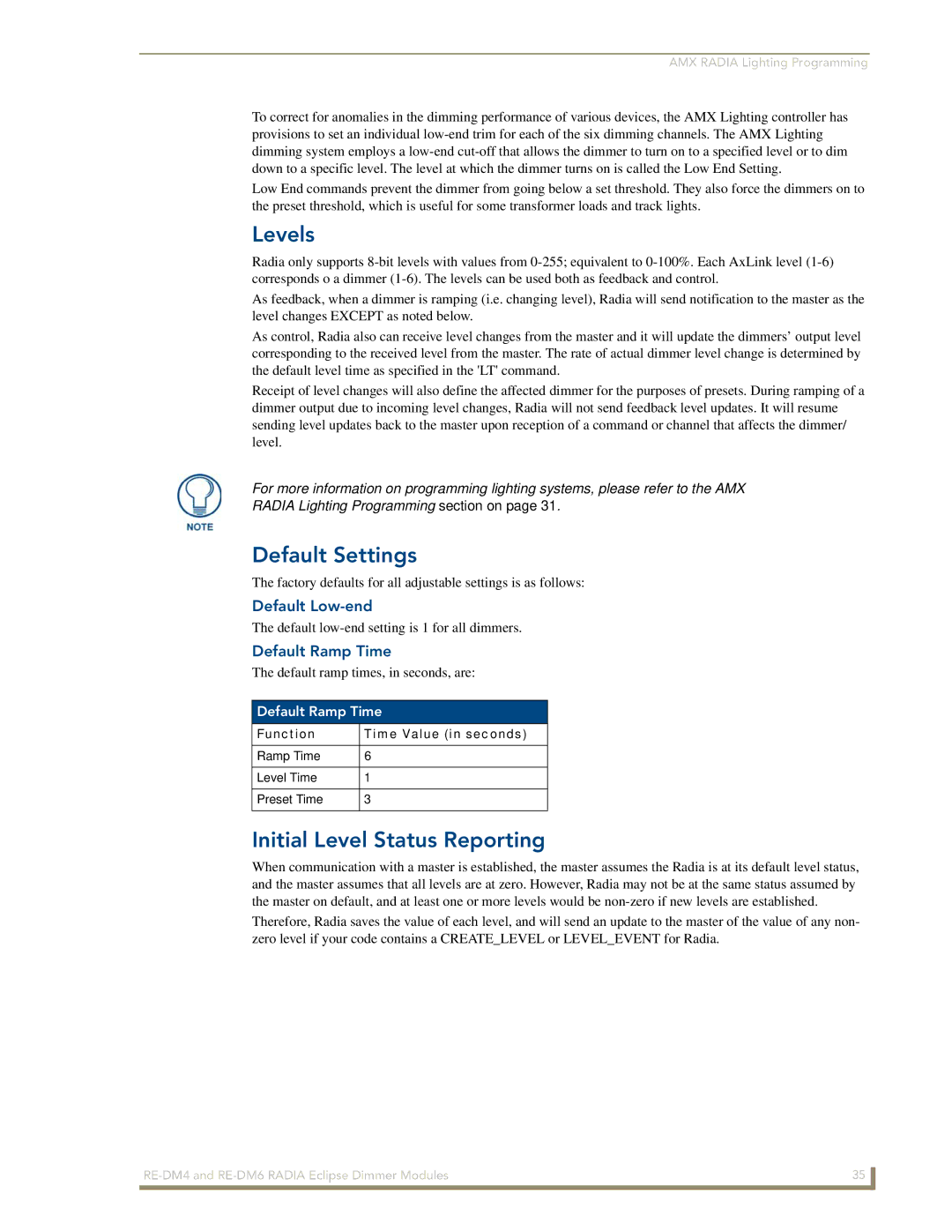RE-DM4, RE-DM6 specifications
The AMX RE-DM4 is a cutting-edge solution in the realm of digital media management, designed to cater to the complexities of modern broadcasting environments. This advanced device aims to streamline workflows, enhance media asset management, and ensure optimal media delivery across various platforms.One of the standout features of the AMX RE-DM4 is its robust interface, which allows users to interact with the system intuitively. The device incorporates a user-friendly GUI that enables operators to manage media assets effortlessly. The interface supports drag-and-drop functionalities, which greatly simplifies the process of uploading, organizing, and retrieving digital content.
The AMX RE-DM4 also boasts innovative multimedia processing capabilities, allowing it to handle high-resolution video formats with ease. The device supports a range of codecs, ensuring compatibility with the latest video and audio standards. This versatility is crucial for broadcasters who frequently work with diverse media types and formats.
Furthermore, the AMX RE-DM4 features advanced metadata tagging and search functionalities. This technology empowers users to tag media assets with critical information, enabling quick retrieval and efficient categorization. The integrated search engine is designed to facilitate instant searches, thereby reducing downtime and improving overall productivity.
Another notable characteristic of the AMX RE-DM4 is its scalability. The system is designed to grow alongside evolving media requirements, making it an ideal choice for both small studios and large broadcasting networks. With modular components and expandable storage options, users can easily upgrade their systems as their needs change.
In terms of connectivity, the AMX RE-DM4 includes multiple input and output options, ensuring seamless integration with existing studio equipment and networks. It supports various protocols, which enhances compatibility with other devices and allows for more fluid media workflows.
Security is a crucial aspect of digital media management, and the AMX RE-DM4 addresses this by incorporating robust encryption and access control features. Users can set permissions for different team members, safeguarding sensitive content while still allowing collaborative work environments.
In conclusion, the AMX RE-DM4 emerges as a powerful tool for media professionals, integrating state-of-the-art technologies and features that enhance efficiency and productivity. Its intuitive interface, multimedia processing capabilities, advanced search options, scalability, and robust security measures make it a valuable asset in the fast-paced world of digital media management. This device exemplifies a forward-thinking approach to media handling, positioning itself as a leader in the industry.

